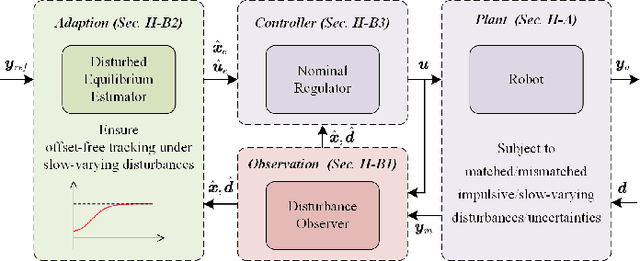Boyi Wang
Steady-State Drifting Equilibrium Analysis of Single-Track Two-Wheeled Robots for Controller Design
Apr 12, 2025Abstract:Drifting is an advanced driving technique where the wheeled robot's tire-ground interaction breaks the common non-holonomic pure rolling constraint. This allows high-maneuverability tasks like quick cornering, and steady-state drifting control enhances motion stability under lateral slip conditions. While drifting has been successfully achieved in four-wheeled robot systems, its application to single-track two-wheeled (STTW) robots, such as unmanned motorcycles or bicycles, has not been thoroughly studied. To bridge this gap, this paper extends the drifting equilibrium theory to STTW robots and reveals the mechanism behind the steady-state drifting maneuver. Notably, the counter-steering drifting technique used by skilled motorcyclists is explained through this theory. In addition, an analytical algorithm based on intrinsic geometry and kinematics relationships is proposed, reducing the computation time by four orders of magnitude while maintaining less than 6% error compared to numerical methods. Based on equilibrium analysis, a model predictive controller (MPC) is designed to achieve steady-state drifting and equilibrium points transition, with its effectiveness and robustness validated through simulations.
Equilibrium Adaptation-Based Control for Track Stand of Single-Track Two-Wheeled Robots
Oct 25, 2024



Abstract:Stationary balance control is challenging for single-track two-wheeled (STTW) robots due to the lack of elegant balancing mechanisms and the conflict between the limited attraction domain and external disturbances. To address the absence of balancing mechanisms, we draw inspiration from cyclists and leverage the track stand maneuver, which relies solely on steering and rear-wheel actuation. To achieve accurate tracking in the presence of matched and mismatched disturbances, we propose an equilibrium adaptation-based control (EABC) scheme that can be seamlessly integrated with standard disturbance observers and controllers. This scheme enables adaptation to slow-varying disturbances by utilizing a disturbed equilibrium estimator, effectively handling both matched and mismatched disturbances in a unified manner while ensuring accurate tracking with zero steady-state error. We integrate the EABC scheme with nonlinear model predictive control (MPC) for the track stand of STTW robots and validate its effectiveness through two experimental scenarios. Our method demonstrates significant improvements in tracking accuracy, reducing errors by several orders of magnitude.
 Add to Chrome
Add to Chrome Add to Firefox
Add to Firefox Add to Edge
Add to Edge